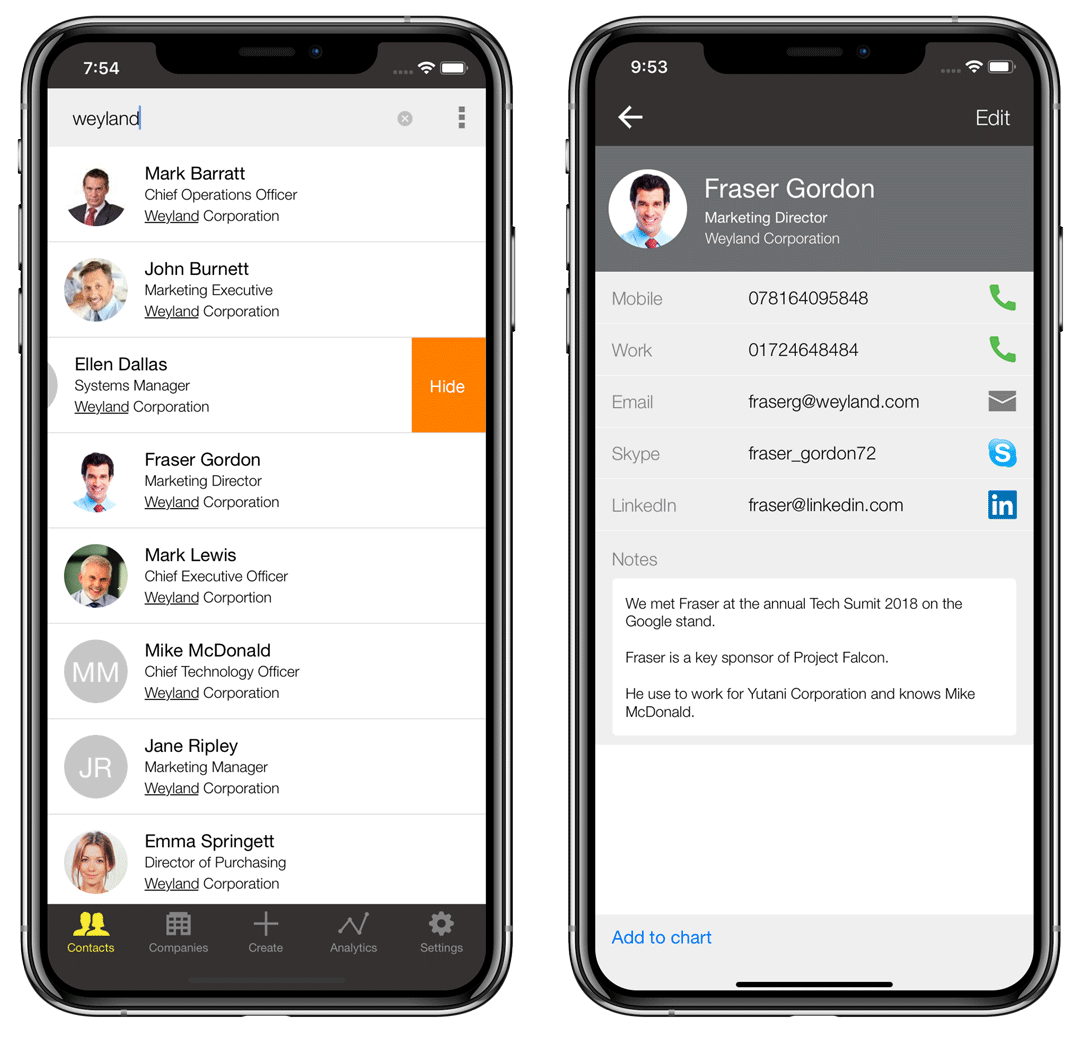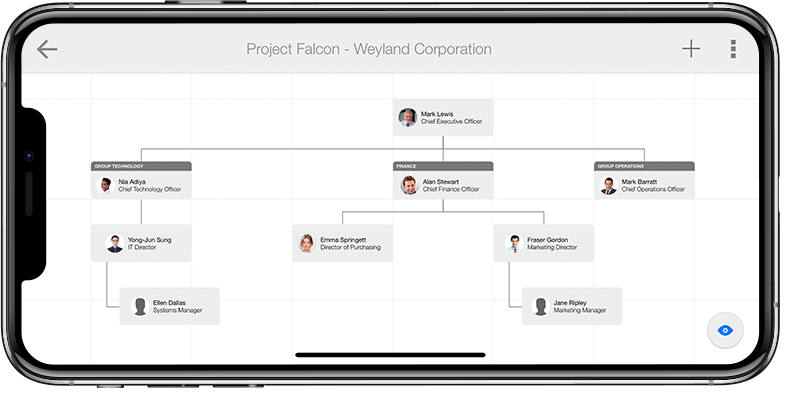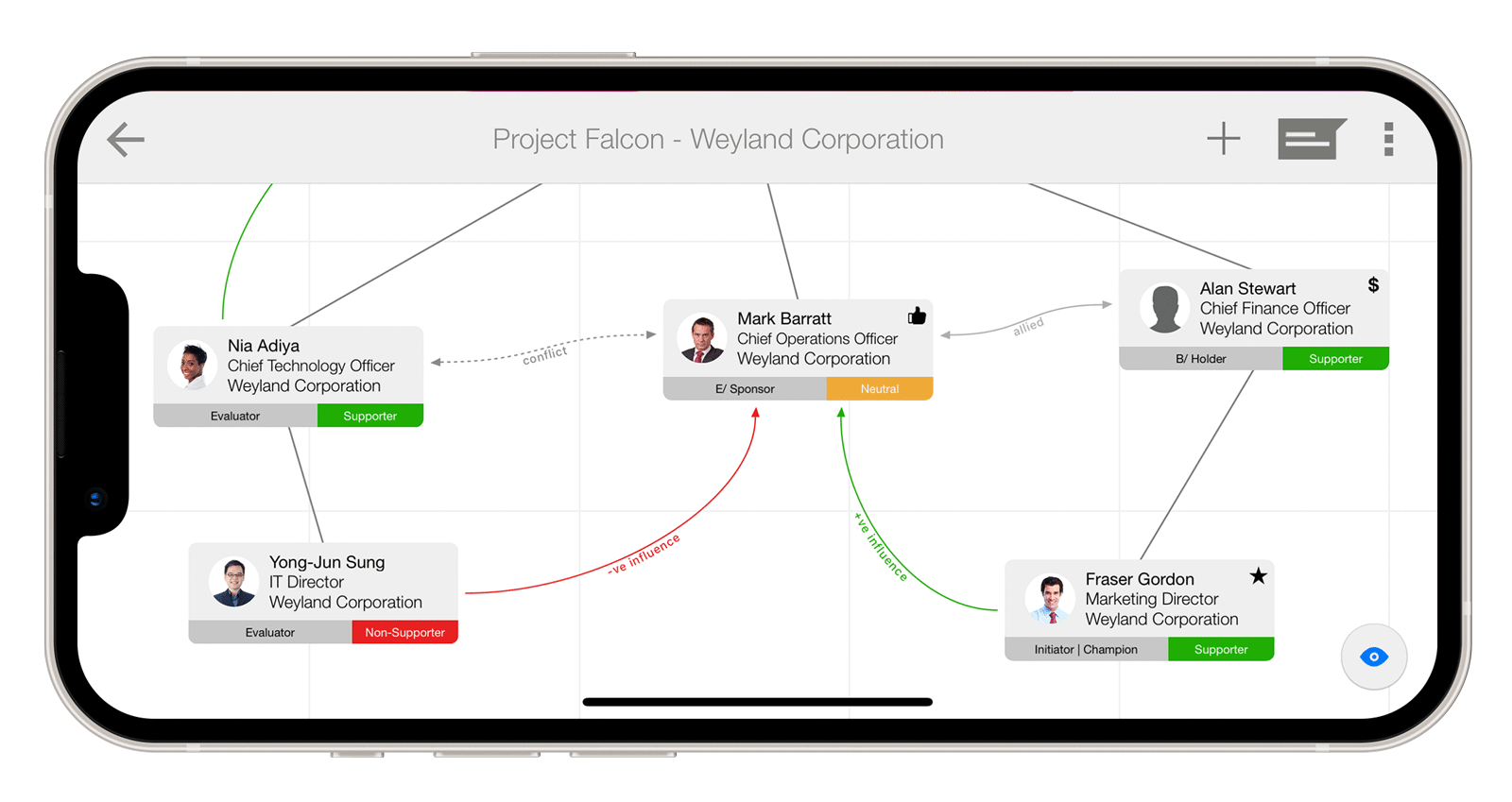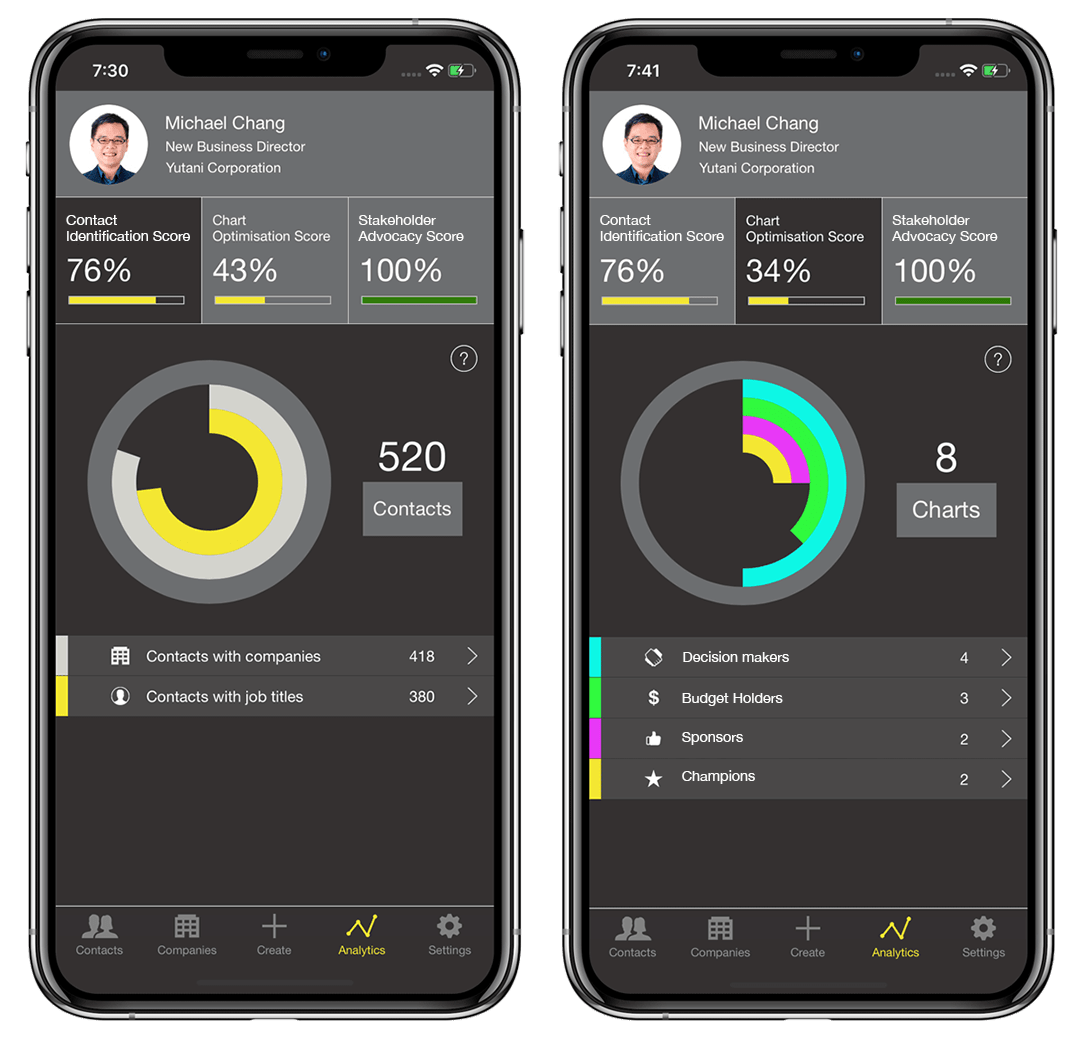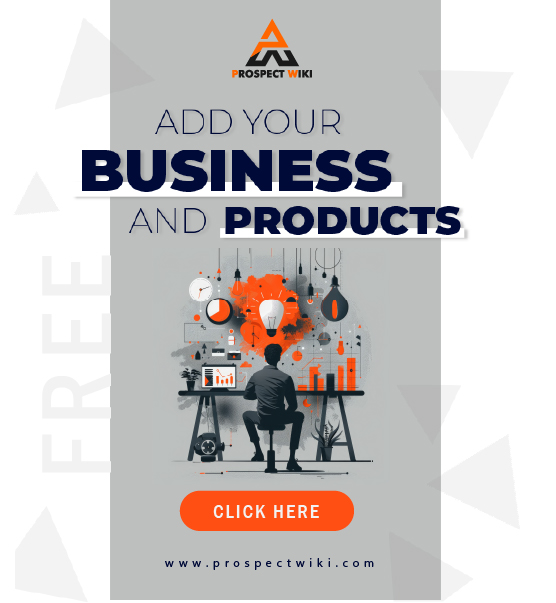Product Overview
ContactBase
ContactBase is an address book app for sales professionals that lets you secure the long-term value of your contacts. The app lets you manage, organise and optimise your contact data across your devices. It helps you to understand hierarchies and navigate the politics of complicated negotiations to gain the upper hand.
Specifications
Address book app
What is an Address book app?
Address book app helps you manage the contacts stored on your mobile device. Contacts are usually displayed by First and Second names within an alphabetically ordered list. Users can scroll through the list to find a given contact or use a search box for quick precision searches. A contact record usually includes: telephone numbers, email addresses and physical addresses. Within the address book app, you can tap on a contact’s telephone number to call up your device’s dialler. Similarly, tapping an email address will call up your device’s email app.
Address book apps let you share contact records between mobile device through the common file format vCard (.vcf). Address book apps also let you synchronise with cloud email accounts Outlook or Google Contacts so you can access your contacts across multiple devices and platforms.
Features of an address book app
All mobile devices comes with a native address book app. iOS and Android mobile operating systems call their address book app ‘Contacts’, whereas Windows Mobile calls its native application ‘People’. The native address book app that comes with your device is limited to basic functionality and designed for consumers.
Third party address book apps provide a richer, more comprehensive contact management experience. These are some of the key features you can find:
Cloud storage: Instead of relying on device storage, many third party address book app’s make use of a cloud back-end which lets you access your contacts across multiple devices. That could be your mobile, tablet and work mobile. This solves the address book inconsistency problem and stops you having to manually double key contacts across devices.
Contact de-duplication: Throughout the job changes and phone upgrades of your career, your address book can easily turn into a disorderly mess. Some address book apps let you identify duplicate contacts, then merge their details into a new up-to-date record.
Contact Notes: Perhaps you need to remember how or where you met somebody? Many third party address book apps let you create notes you can pin to your contact as a future reminder.
Business card scanning: A number of address book apps help you remove the monotony of typing out contact details into your mobile device by utilising optical recognition technology to scan and upload details from printed business cards.
Contact backup: Over time, it is easy to accidentally delete numbers, email addresses or whole contacts. When you’ve cleaned and organised your address book, its always a good time to backup. Some address book apps automatically backup you contacts, so if you get in trouble you can restore your address book over various increments ranging from an hour ago to a year ago.
Chart view: More advanced address book apps provide the ability to see how your contacts connect and relate with other contacts in your address book across a chart. These features are particularly useful for business users as they indicate the seniority within a hierarchy or influence within a project or negotiation.
Public data integration: One of the more advanced features is integration with public data. This functionality keeps your contact details up-to-date by scanning the web for data your contact may have uploaded to a public profile such as their job titles and social media handles. The expectation is often better than the reality though, as the we’s not always going to have up-to-date info, nor will it have an update for every contact.
Org chart app
What is an org chart app?
An org chart app lets you create org charts from your mobile device. Org charts or organization charts are visual illustrations that show the internal structure of an organisation. These illustrations show the distribution of rank across the structure of the organization relative to the job functions within it. Employees within an org chart are often represented by box shapes, which often include text data such as name and job title, but sometimes include a photograph and contact information.
Relationships in org charts are sometimes called chain of command, which depicts supervisor to subordinate relationships, as well as lateral relationships which show individuals at the same level. When an org chart becomes too large to be useful, they can be easily split into smaller departmental charts. Org charts can also be known as Organograms or Organogram Charts.
Org charts are used in several places across the enterprise:
Sales – Org charts can be used to help sales executives, account executives and business development managers better understand the hierarchy of a customer organization. An org chart helps the sales professional understand the broad responsibilities of the individuals they must engage within the hierarchy.
Customer Success – As well as sales, customer success managers use org charts when starting a new role or adopting a new set of customer accounts. Org charts help the customer success manager navigate the organisational hierarchy and its distribution of power.
Project Managers – Current-state and future-state org charts are used by project managers to manage the scope of a project as it transitions from it’s initial owners to a permanent team.
Human Resources – Org charts can be used for resource planning to help HR managers understand areas of under-staffing within an organisation, to fill skills gaps and grow the business in the right direction. Org charts help new hires get up to speed with where individuals fit into the operation of the business, also helping them to understand where they fit into the overall structure of the corporation.
Business Leaders – Org charts are used to help business leaders or owners understand areas of over-staffing with an organisation, to enable a more efficient distribution of resources. Org charts are heavily utilised
Relationship mapping
What is relationship mapping?
Relationship mapping involves the creation of a visual chart depicting the stakeholders, roles, motivations and biases within a project. Different symbols, colour codes and lines are used to indicate relationship types, strengths and directions.
Relationship maps are visual illustrations that shows a broad view of the interactive relationships between the stakeholders of a project, committee or negotiation.
Alternative names for a relationship map include organizational context diagram, business interaction model, entity relationship diagram and organizational relationship map.
Relationship maps are used in several areas across the enterprise:
Sales – Relationship mapping helps sales executives, account executives and business development managers win new commercial opportunities as well as grow or protect existing business. As research tell us, an average of 7 people will be involved in an B2B purchasing decision. With the increase in decision-makers, the complexity of making the sale increases. Relationship maps are most valuable in complex projects or negotiations which involve a lot of influencers.
Customer Success – As well as sales, customer success managers use relationship maps when starting a new role or adopting a new set of customer accounts. Relationship mapping can also be used to train and coach new customer success or renewals managers on the complexity of a typical deal, by demonstrating the inner workings of a customer’s buying committee.
Business Consultants – Business consultants hired to improve the position of a business often use relationship maps when proposing changes to an organisation’s structure including hiring new management or merging with other organisations. Relationship maps help highlight standout individuals with the greatest power and influence.
Project Managers – Current-state and future-state relationship maps are used by project managers to manage the scope of a project as it transitions from it’s initial owners to a permanent team.
Business Leaders – Relationship maps are used to help business leaders or owners understand areas of over-staffing with an organisation, to enable a more efficient distribution of resources. Org charts are heavily utilised following mergers and acquisitions.
Address book analytics
What is address book analytics?
Address book analytics lets you see powerful data visualisations of your address book data. The solution scans your address book to identify contacts with missing meta data such as Job Titles and Companies. Visual charts and filters help you optimise and strengthen your data.
A scoring system is used to measure completeness and optimisation:
Contact Identification Score: An indication of how well you’ve identified your contacts. To improve your score, add Companies and Job Titles to your contacts.
Chart Optimisation Score: The Chart Optimisation Score is a measure of the number of aspirational contacts contained within your charts. A chart containing the 4 aspirational roles is considered optimised:
Decision Maker
Sponsor
Budget Holders
Champions
Stakeholder Advocacy Score: The Stakeholder Advocacy Score indicates how successful you re at winning over stakeholders. Stakeholders are contacts who have been assigned roles. To increase your score, increase the number of Supporters and decrease the number of Non-Supporters.


